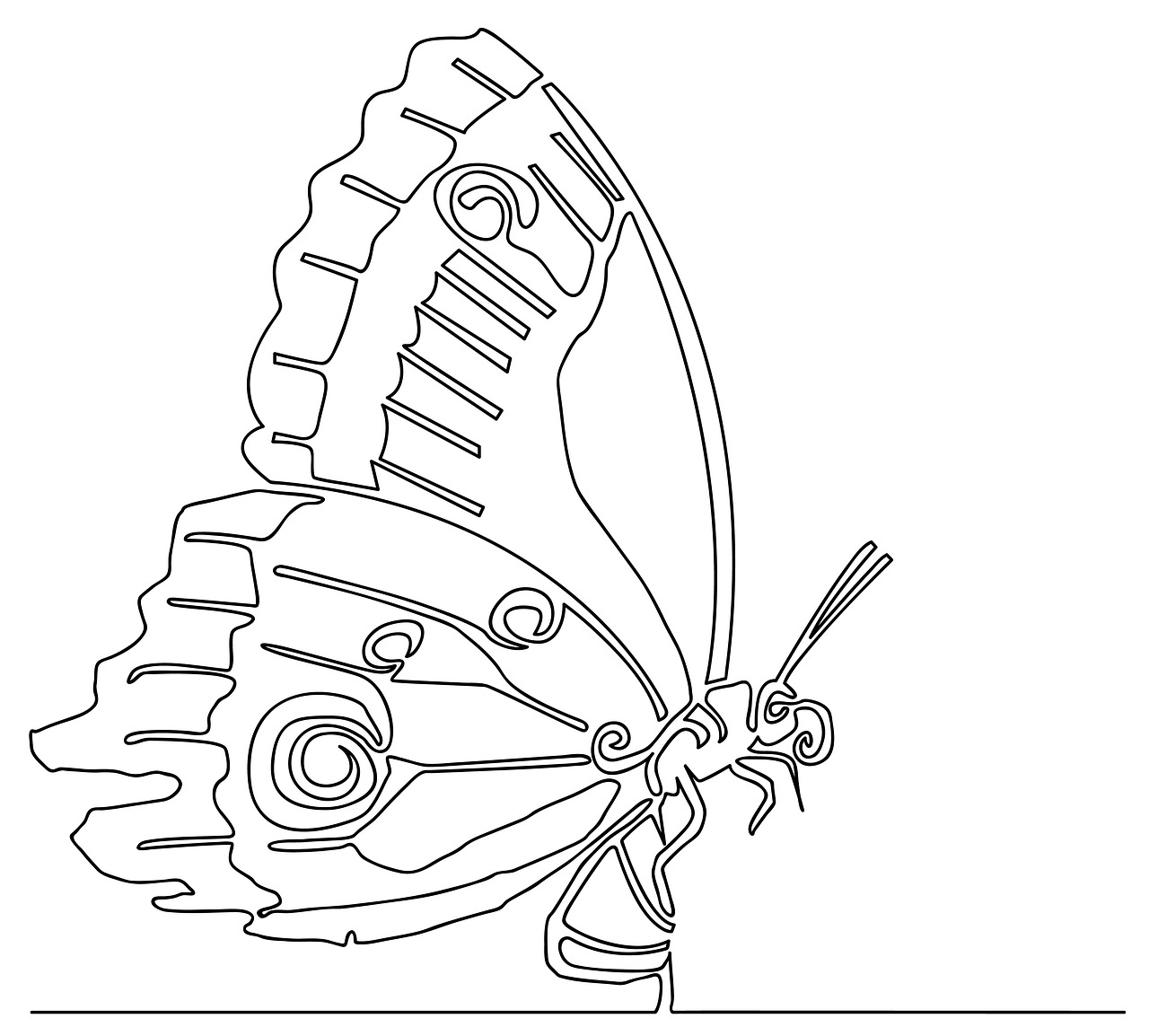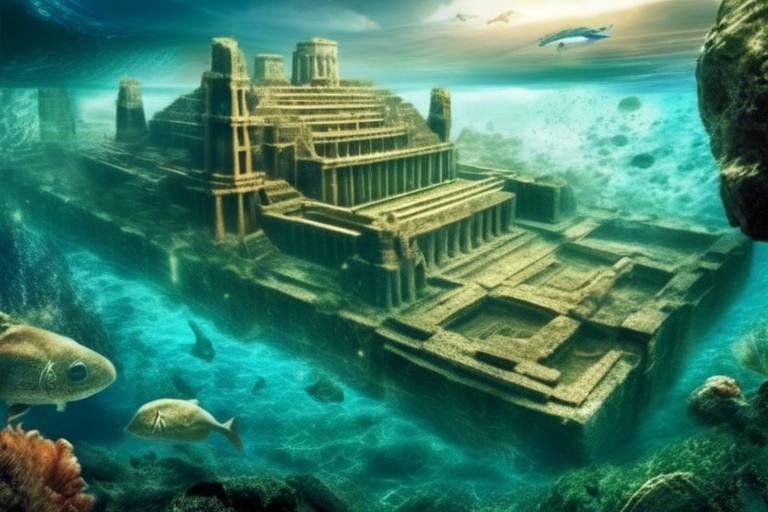The Lost World of the Nazca Lines - Who Created Them?
The Nazca Lines, etched into the arid landscape of the Nazca Desert in southern Peru, have long puzzled archaeologists, historians, and curious minds alike. These massive geoglyphs, ranging from simple lines to intricate designs of animals, plants, and geometric shapes, cover an expansive area, leaving observers in awe of their scale and precision. The mystery surrounding the creation of these ancient artworks has sparked numerous theories and debates, with one central question looming over all - who were the masterminds behind the Nazca Lines?

The Mystery of the Nazca Lines
The Nazca Lines, etched into the barren landscape of the Nazca Desert in Peru, have long puzzled archaeologists, historians, and curious minds alike. These gigantic geoglyphs, ranging from simple lines to intricate designs of animals and plants, cover an expansive area, leaving observers in awe of their sheer size and complexity. The mystery surrounding the Nazca Lines lies not only in their purpose but also in the question of who created these remarkable figures and why.
One of the prevailing theories suggests that the Nazca people, an ancient civilization that thrived in the region between 200 BCE and 600 CE, were responsible for crafting these geoglyphs. The Nazca culture, known for its advanced knowledge of irrigation and pottery, is believed to have had the technical skills required to create such massive designs on the desert floor. However, the exact methods and tools they used to achieve such precision remain a subject of debate among scholars.
Some researchers propose that the Nazca Lines served as pathways or markers for ceremonial or religious purposes, while others speculate that they might have been linked to astronomical observations or even extraterrestrial communication. The alignment of certain geoglyphs with the movements of the sun, moon, and stars has led to intriguing hypotheses about the Nazca people's understanding of celestial events and their significance in their culture.
Despite decades of study and analysis, the true purpose of the Nazca Lines continues to elude definitive explanation. The sheer scale and intricacy of these geoglyphs, combined with the limited available historical records from the Nazca civilization, add layers of complexity to the mystery. As new technologies and research methods emerge, ongoing efforts to unravel the enigma of the Nazca Lines persist, keeping the allure of these ancient wonders alive for generations to come.

Ancient Nazca Civilization
The Ancient Nazca Civilization refers to the pre-Columbian culture that thrived in the Nazca region of southern Peru between 100 BC and 800 AD. This ancient civilization is renowned for its remarkable pottery, sophisticated irrigation systems, and of course, the mysterious Nazca Lines etched into the desert floor. The Nazca people were skilled artisans and farmers, adapting to the arid environment through innovative agricultural techniques that allowed them to flourish in an otherwise challenging landscape.
One of the most fascinating aspects of the Nazca civilization is their ability to create intricate textiles and ceramics, showcasing their artistic prowess and attention to detail. The Nazca pottery, adorned with vibrant colors and intricate designs, provides insights into their beliefs, rituals, and daily life. These artifacts not only serve as archaeological treasures but also as windows into the cultural practices of the ancient Nazca people.
Furthermore, the Nazca civilization is believed to have been organized into small chiefdoms or independent communities, each with its own social structure and governance system. The Nazca society was hierarchical, with distinct roles for rulers, priests, artisans, and farmers. Their religious beliefs were deeply intertwined with nature and the cosmos, as evidenced by the elaborate rituals and ceremonies they performed.
Archaeological evidence suggests that the Nazca people were skilled engineers, constructing underground aqueducts known as puquios to channel water from the Andes mountains to their agricultural fields. This ingenuity allowed them to sustain their population and cultivate crops such as maize, beans, and cotton in an otherwise arid environment. The Nazca civilization's ability to harness natural resources and adapt to their surroundings contributed to their long-lasting presence in the region.

Designs and Patterns
When it comes to the Nazca Lines, one cannot help but be mesmerized by the intricate and massive designs that adorn the desert floor. These geoglyphs, ranging from simple geometric shapes to elaborate depictions of animals and plants, have puzzled researchers and visitors alike for centuries. The sheer scale and precision of these designs hint at a level of sophistication and artistry that is truly awe-inspiring.
Among the most famous figures etched into the Nazca Desert are the hummingbird, spider, monkey, and tree, each meticulously crafted with an attention to detail that is hard to fathom. The sheer size of these geoglyphs, some stretching over hundreds of meters, adds to the mystery surrounding their creation. How were the ancient Nazca people able to achieve such precision without the aid of modern technology?
One of the most intriguing aspects of the Nazca Lines is the way in which these designs seem to interact with the natural landscape, as if they were meant to be viewed from a specific vantage point. Some researchers have proposed that these geoglyphs may have served as pathways for ceremonial processions or as markers for important astronomical events. Could the Nazca Lines have been a form of ancient art with a deeper symbolic meaning?
Examining the patterns and symmetrical designs of the Nazca Lines, one cannot help but wonder about the purpose behind such elaborate creations. The geometric precision displayed in figures like the spiral, trapezoids, and zig-zag lines suggests a level of mathematical and engineering knowledge that is truly remarkable. Were these designs purely decorative, or did they hold a deeper significance for the ancient Nazca civilization?

Astronomical Alignments
When delving into the mysterious world of the Nazca Lines, one cannot ignore the fascinating aspect of astronomical alignments that have captured the curiosity of researchers and enthusiasts alike. These ancient geoglyphs, etched into the desert floor of Peru, have sparked discussions about potential connections to celestial events and astronomical phenomena.
One of the prevailing theories suggests that the Nazca Lines might have served as a massive astronomical calendar, aligning with the movements of the sun, moon, and stars. Some researchers believe that certain geoglyphs correspond to specific celestial events, such as solstices or equinoxes, indicating a sophisticated understanding of astronomy by the ancient Nazca civilization.
Moreover, the positioning of certain geoglyphs in relation to prominent celestial bodies has led to speculation about possible rituals or ceremonies conducted by the Nazca people to honor or communicate with the celestial realm. The intricate designs of animals, plants, and geometric shapes may have held symbolic meanings tied to astronomical beliefs and cosmological concepts.
Recent studies have also highlighted the precision with which some of the Nazca Lines align with significant astronomical markers, suggesting a deliberate effort to incorporate celestial alignments into the vast array of geoglyphs scattered across the Nazca Desert. The sheer scale and complexity of these alignments continue to puzzle researchers, prompting further exploration and analysis to unravel the astronomical mysteries hidden within the Nazca Lines.

Techniques and Tools
When it comes to unraveling the mystery of the Nazca Lines, one cannot help but wonder about the techniques and tools employed by the ancient Nazca civilization to create these massive geoglyphs. The sheer size and precision of the designs etched into the desert floor have baffled researchers for decades, prompting various theories and speculations.
One of the prevailing theories suggests that the Nazca people used simple tools such as wooden stakes and ropes to create the lines. By carefully plotting out the designs on a smaller scale and then scaling them up using basic geometric principles, they were able to achieve remarkable accuracy in their creations. This meticulous planning and execution speak to the advanced mathematical and engineering knowledge possessed by the Nazca civilization.
Moreover, recent studies have indicated that the Nazca Lines might have been created using a technique known as the "removal method." This process involves removing the dark surface stones covering the desert floor to reveal the lighter-colored earth beneath, thus forming the lines. By strategically clearing away debris, the Nazca people could effectively create intricate shapes and figures visible from great heights.
Additionally, the use of simple surveying tools, such as sighting poles and plumb bobs, might have aided the Nazca in maintaining straight lines and geometric precision across vast distances. These tools, combined with the careful planning and coordination of labor, enabled the Nazca civilization to leave behind a lasting legacy that continues to captivate and mystify modern-day observers.

Recent Discoveries
Recent discoveries surrounding the Nazca Lines have continued to intrigue researchers and archaeologists, shedding new light on these ancient geoglyphs. One significant finding is the use of drones equipped with advanced imaging technology to uncover previously unseen lines and figures, expanding the known scope of the Nazca geoglyphs. These aerial surveys have revealed additional designs and patterns that were previously hidden from view, deepening the mystery of the Nazca Lines' purpose and significance.

Controversies and Debates
When it comes to the Nazca Lines, controversies and debates have always surrounded these mysterious geoglyphs etched into the Peruvian desert. One of the most heated debates among scholars is centered around the purpose behind these massive designs. Some argue that the lines served as pathways for ceremonial processions or as markers for underground water sources, while others believe they held astronomical significance, aligning with celestial events.
Another contentious issue is the question of who created the Nazca Lines. While some attribute their creation to the ancient Nazca civilization, others propose extraterrestrial or supernatural explanations. The intricate designs and massive scale of the geoglyphs have led to speculation about the advanced knowledge and technology possessed by the Nazca people, sparking debates about their capabilities.
Furthermore, the preservation of the Nazca Lines has been a subject of controversy. Despite efforts to protect these ancient wonders, they are increasingly threatened by environmental factors and human activities. The delicate balance between conservation and tourism raises ethical debates about how best to safeguard the lines for future generations while still allowing access for visitors to experience their awe-inspiring beauty.

Preservation Efforts
Preserving the ancient and delicate Nazca Lines is a monumental task that requires careful planning and dedicated efforts. Due to their exposure to natural elements and human activity, these mysterious geoglyphs are at risk of deterioration and damage. Various preservation strategies have been implemented to safeguard these intricate designs for future generations to marvel at.
One of the key preservation efforts for the Nazca Lines involves monitoring and controlling access to the site. Limiting foot traffic and restricting the number of visitors helps reduce the impact of human activity on the fragile desert landscape where the geoglyphs are located. By managing tourism effectively, authorities can mitigate the risk of erosion and vandalism.
Additionally, the use of modern technology plays a crucial role in preserving the Nazca Lines. Remote sensing techniques, such as satellite imagery and drones, are utilized to monitor the condition of the geoglyphs without disturbing the site. This non-invasive approach allows experts to assess any changes or potential threats to the Nazca Lines accurately.
Collaboration between archaeologists, conservationists, and local communities is essential for the successful preservation of the Nazca Lines. By engaging in research, education, and community outreach programs, stakeholders work together to raise awareness about the cultural significance of these ancient symbols and promote sustainable practices for their protection.
Furthermore, ongoing maintenance efforts are crucial to ensure the longevity of the Nazca Lines. Clearing debris, repairing damage caused by natural factors, and implementing preventive measures against erosion are part of the routine maintenance activities carried out to preserve the integrity of the geoglyphs. By staying vigilant and proactive, experts strive to maintain the authenticity and beauty of the Nazca Lines.
In conclusion, the preservation of the Nazca Lines is a multifaceted endeavor that requires a combination of conservation techniques, technological advancements, community involvement, and continuous monitoring. By safeguarding these remarkable archaeological wonders, we can ensure that future generations have the opportunity to appreciate and study the enigmatic creations of the ancient Nazca civilization.

Visiting the Nazca Lines Today
Visiting the Nazca Lines today is a truly remarkable experience that allows travelers to witness one of the world's most intriguing archaeological sites up close. These ancient geoglyphs, etched into the desert floor centuries ago, continue to captivate visitors with their mystery and grandeur. As you stand amidst these colossal designs, it's hard not to marvel at the creativity and precision of the ancient Nazca civilization.
When planning a trip to the Nazca Lines, it's essential to consider the best way to view them. One popular option is taking a scenic flight over the desert, providing a bird's eye view of the intricate designs that stretch across the landscape. Alternatively, some tours offer the opportunity to explore the lines on the ground, allowing for a more immersive experience.
It's important to remember that the Nazca Lines are delicate and vulnerable to damage, so visitors are urged to respect the site and follow guidelines to minimize impact. Preservation efforts are ongoing to protect these ancient wonders for future generations to appreciate.
For those curious about the cultural significance of the Nazca Lines, local guides are available to provide insights into the history and theories surrounding their creation. These guides offer valuable context that enhances the overall experience of visiting the site.
Additionally, travelers can explore the nearby Nazca Desert, known for its unique flora and fauna, adding another layer of discovery to the journey. From ancient mysteries to natural wonders, the Nazca region offers a blend of history and beauty that is sure to leave a lasting impression on visitors.
Frequently Asked Questions
- Who created the Nazca Lines?
The creators of the Nazca Lines remain a mystery, with various theories suggesting ancient Nazca people, aliens, or supernatural forces as possible creators.
- What is the purpose of the Nazca Lines?
The purpose of the Nazca Lines is still debated among scholars, with theories ranging from astronomical calendars, religious rituals, to markers for water sources or pathways.
- How were the Nazca Lines made?
The Nazca Lines were created by removing the reddish-brown iron oxide-coated pebbles that cover the surface of the Nazca desert, revealing the light-colored earth beneath to form the intricate designs.
- Are the Nazca Lines visible from the ground?
While some of the smaller figures are visible from the surrounding foothills, the best way to view the Nazca Lines is from the air, either by plane or drone, to appreciate the full scale and detail of the geoglyphs.
- Why are the Nazca Lines important?
The Nazca Lines are important for their cultural and historical significance, offering insights into the beliefs, practices, and capabilities of the ancient Nazca civilization, as well as serving as a UNESCO World Heritage Site.
- Can visitors walk on the Nazca Lines?
In order to protect the Nazca Lines from damage, visitors are not allowed to walk on the geoglyphs themselves. Viewing platforms and designated areas are provided for visitors to observe the lines without causing harm.



















